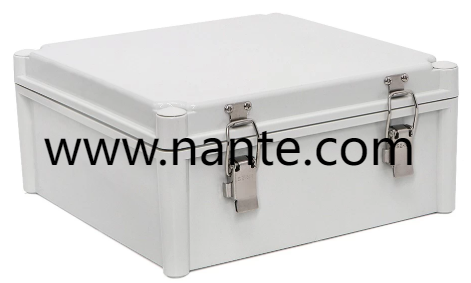Nante Modular Socket Boxes for Global Installation Projects

When modern buildings undergo electrical upgrades, choosing the right Electrical Socket Box means considering regional standards and compatibility. In the United States, enclosures must match North American outlet sizes and NEMA configurations, typically designed for single-gang or multi-gang installations with standard 15- or 20-amp circuits. By contrast, the United Kingdom specifies BS-approved boxes sized for modular switches and sockets, with integrated earth terminals and shutters to meet safety regulations. Meanwhile, European Union installations favor boxes compliant with local IEC standards, accommodating two-pin or Schuko outlets often mounted in depth-graded flush plates. Understanding these differences ensures seamless integration for global projects and simplifies maintenance across borders.
US installations emphasize clearances and wiring methods, mandating specific internal volumes based on conductor counts to reduce overheating risks. Boxes often feature cable clamps and threaded knockouts for flexible conduit connections. In the UK, flush boxes are set behind plaster or drywall to achieve a smooth finish, and often include mounting lugs that resist pull-out during switch or socket removal. EU boxes support a variety of finishes, from painted surfaces to stainless steel panels in public spaces, and incorporate clip-in terminals that simplify field wiring without bulky tools.
Material choices also vary by region. In North America, non-metallic PVC boxes dominate residential applications, prized for their corrosion resistance and light weight. Metal boxes appear in commercial and industrial settings, offering stronger fire ratings and enhanced grounding. UK standards allow both plastic and metal variants, provided they carry marked certifications and earth bonding is maintained. Across Europe, plastic boxes must meet UV exposure tests for outdoor use, while stainless steel options cater to high-traffic areas and hygiene-critical environments like hospitals.
Mounting requirements reflect these regional practices. US wall boxes attach to studs or use old-work clamps for retrofit. UK pattress boxes screw onto wood joists or embed into blockwork, featuring depth adjustment rings for varied wall thicknesses. EU systems often use modular rail frames inside concrete walls, enabling installers to pre-wire communication and power modules before closing the wall. This pre-assembly approach accelerates smart building rollouts where lighting, sensors, and data hubs all converge at a single box location.
Connectivity options differ as well. American designs frequently include integrated USB outlets alongside traditional sockets, supporting device charging without external adapters. UK boxes often offer telephone, TV and data ports in the same mounting frame, catering to home entertainment setups. European installations may employ combined power and Ethernet sockets for PoE devices, streamlining cabling in office environments. Each region's approach balances convenience with wiring complexity, guiding project planners to choose the most suitable enclosure.
Safety features are tailored too. US codes require arc-fault and ground fault interrupters in many circuits, prompting socket boxes to incorporate space for specialized breakers or residual current devices. In the UK, double-insulated socket designs and shuttered apertures protect users, while EU standards stress earthing continuity and protective equipotential bonding for outdoor boxes. Compliance testing and certification labels on each box give installers confidence that the enclosure meets local regulations.
Aesthetic trends influence box design across markets. US interiors may favor white or ivory finishes to match drywall, with screw-cover caps for a clean look. UK styles range from satin chrome to polished brass faceplates, reflecting classic or contemporary décor. In European settings, customizable paint options and textured finishes blend with architectural themes, especially in heritage projects. A well-chosen Electrical Socket Box complements interior design while performing critical power distribution functions.
Global projects often require enclosures that accommodate multiple standards in one system. Some manufacturers offer hybrid boxes configurable with swap-out mounting plates, allowing installers to swap socket types without changing the entire enclosure. This approach reduces inventory requirements and supports rapid deployment across regions. By selecting adaptable solutions, architects and engineers streamline international installations, ensuring compatibility with local standards while maintaining consistent product performance.
For professionals seeking reliable, region-broad socket enclosures and technical guidance on cross-standard installations, Nante offers a full lineup of modular and fixed-configuration Electrical Socket Box solutions. With detailed catalogs and expert support, Nante products help streamline planning and installation across the US, UK, EU, and beyond. For more information on customizable enclosures and mounting accessories, visit www.nante.com/product/ and explore the range designed to meet diverse regional requirements.


